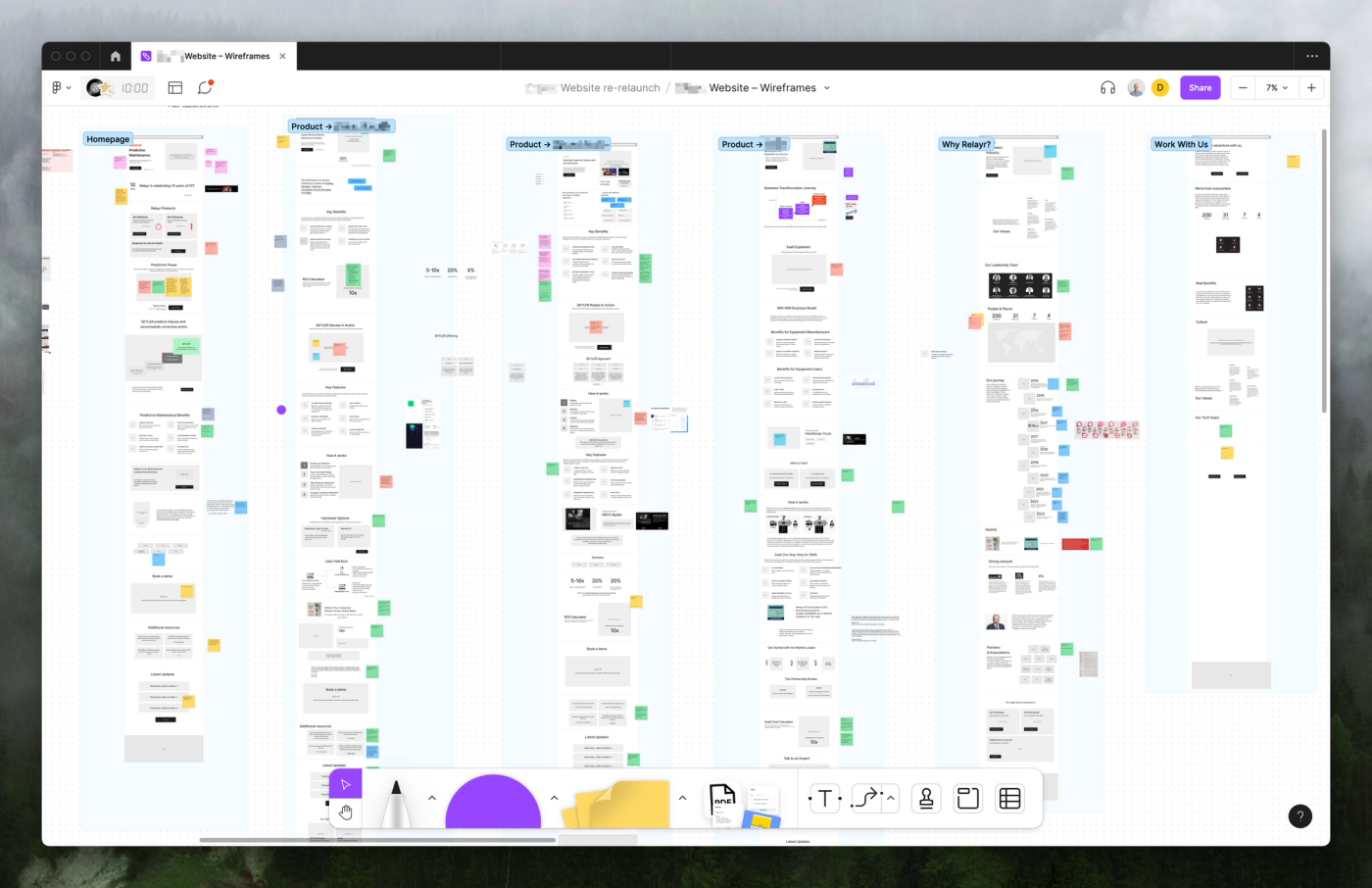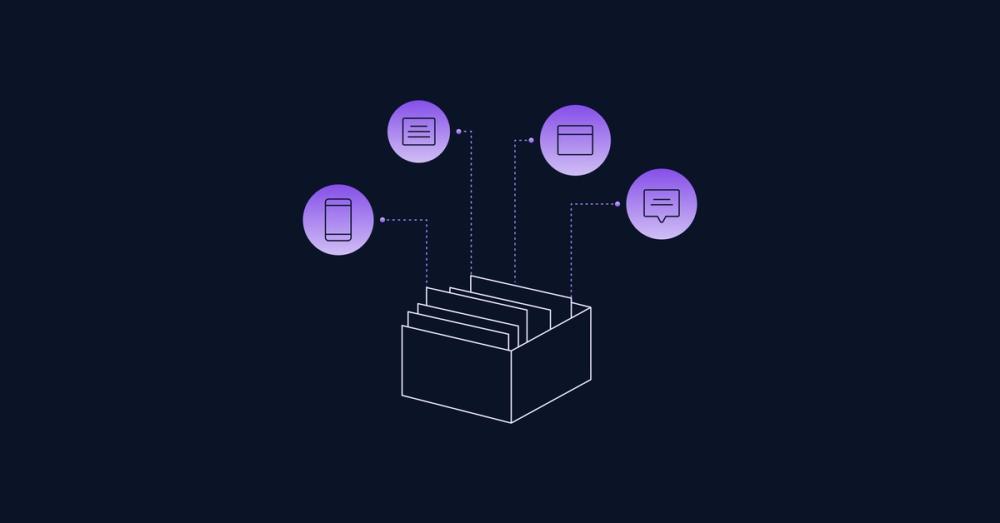- Discovery Research
How to Involve Clients in the Concept Phase of a Website Project

The challenge of creating a website is much MUCH more than just creating a visually appealing layout – at least this is how we understand the task here at Dinghy. It requires a deep understanding of the client's goals, target audience, and the content that will be displayed on the site.
In this article, I’ll present where we came from, will explain why we consider client involvement in the concept phase an essential requirement for the success of such a project and suggest ways how to do this successfully.
Where we’re coming from Link to this headline
During design we never knew what the real content would really be.
A while back – before all this enlightenment – we were designing a website as we always did:
Kick-off meeting with the client, create first designs with dummy content which fitted our design vision perfectly, present to client, client is super happy, gives us the green light and we start to code that thing, hook up the CMS and ask the client for content.
… and suddenly there was a pause in the project. Because of course, the client didn’t know how to create “content” to just copy and paste into the CMS. That was the part of every project that we dreaded and that we accounted for in our initial quote with a huge budget because we knew that the back and forth with the client would cost us time. Furthermore, once we finally got real content we usually re-designed half of the website to accommodate for the actual structure and length of that content.
Of course, we could’ve worked with a copywriter but the problem would’ve been the same: During design, we never knew what the real content would really be.
Content is Crucial Link to this headline
Clients are prepared to pay but they underestimate how much of their own time is required during the project.
One of the most important aspects of any website is the content and not the design.
… Let’s let that sink in for a couple of seconds …
In my career as a web designer for over 10 years, many things have changed but one thing for sure always stayed the same: A client approaches us to design a new website, usually with a rather challenging timeline. They want the design to be “top notch”, “cutting edge” and it’s supposed to “help the company jump to the next curve”. And I get that! That’s absolutely what I think the goal of a website redesign should accomplish.
But part of this one thing that never changed in my career is that actual content – more often than not – is the afterthought. Clients are prepared to pay but they underestimate how much of their own time is required during the project.
🤯 I’m here to tell you, if you get the structure, the user journey and the content right that the design can be black Helvetica on white background with your logo on the top – and the whole site will work 100 times better than if the design is amazing and the content meeh.
The thing is: only key stakeholders inside the client’s team know what it is that needs to go on the website to make the visitor understand the product or service.
Mind the Roles Link to this headline
If you can manage to align the whole team there will be zero pushback regarding design decisions.
Each stakeholder brings a unique view to the project, and this can be used to your advantage. It is important to identify the roles of each stakeholder up front and maybe even draw a little map of who belongs to whom and why they’re important for the project. With this map, you can then involve them in the project accordingly.
Involving all the stakeholders is very important because of the following reasons:
- The CEO is just one stakeholder. Product managers, marketing, sales, and internal design team are equally qualified and have their perspectives on the product/service. If you manage to align all of them there will be zero pushback of the project internally, which is of course important for your success
- Getting everyone’s take and priorities moves you into a more central role in the project: suddenly you’re not just the “web design person” but the person everyone internally turns to for the website project because they know you can get their interest worked into the final website.
- Decision makers are used to agencies doing exactly what they asked for. If you can manage to validate that ask with real feedback from their customers and involve all key stakeholders inside their organization along the way – then you’re building a far deeper, trusting relationship. They will see you as the one who helps their business win.
Get the Story Right Link to this headline
A website is the face of the company to the outside world and as such it’s a mirror of that company.
The story is what ties everything together on a website. It is the narrative that leads the customer to the desired action. It is important to align stakeholders to write a consistent story that includes an underlying plan of calls to action. Once the stakeholders align on the story, the design becomes much easier. And not only that, if you can manage to align the stakeholders as described above you contributing to a bigger company value than just the website. You’ve helped to make connections internally that might not have been active enough before.
A website is the face of the company to the outside world and as such it’s a mirror of that company. An abstracted and idealized mirror, one that makes the company look good like the ones in retail stores but a mirror non the less. This in turn means that if the story being told on the website works and is made up of stakeholders internally aligning, then this can only be beneficial for future work.
Design is a Piece of Cake Link to this headline
The overall look of the site is important, but the story and the flow of information are crucial.
Picking up from the story of where we came from in which the majority of the project budget was allocated to design and development, we have a totally different situation now.
Now design and development can together take up around half of the total budget because designers and developers know exactly what they’re making. It’s also much more enjoyable for them because requirements don't change drastically anymore with real content coming in late.
It is important to ensure that the design serves the content and not the other way around . The overall look of the site is important, but the story and the flow of information are crucial.
All together now Link to this headline
There are several techniques that can be used to effectively involve clients in the concept phase of a website project. These include:
- Define conversion goals : Define the desired conversion goals early on in the process and involve stakeholders in the decision-making process.
- Wireframing : This is a common method that has been around for years. It is a great way to communicate design ideas and get feedback from stakeholders.
- Funnel mapping : The map creates a bird’s eye overview of how leads connect with conversion goals through key pieces of content.
- Sitemaps : These are known from the technical side of web design and can be used to communicate the overall structure of the site.
Conclusion Link to this headline
Designing a website is a collaborative effort that involves multiple stakeholders. It is important to involve clients in the concept phase of the project and ensure that their goals and expectations are aligned with the final product. By following the techniques discussed in this article, you can effectively involve clients in the process and create a website that meets their needs and exceeds their expectations.


